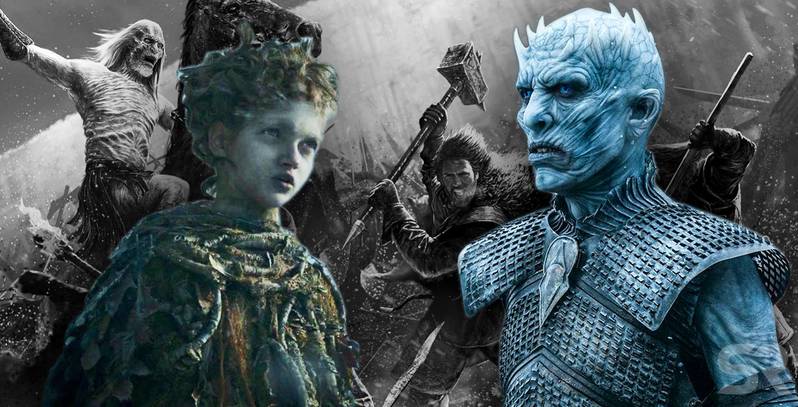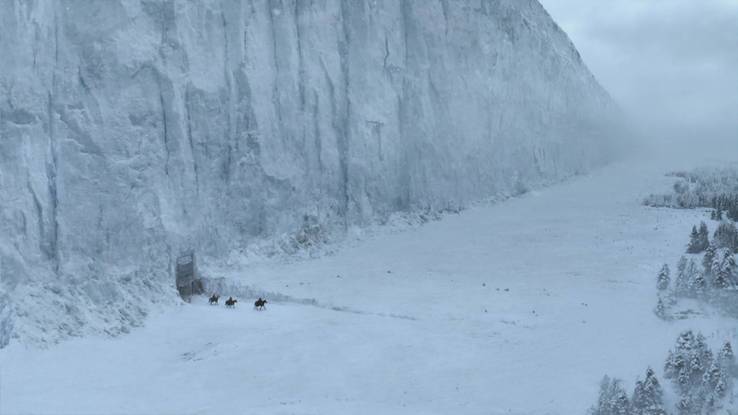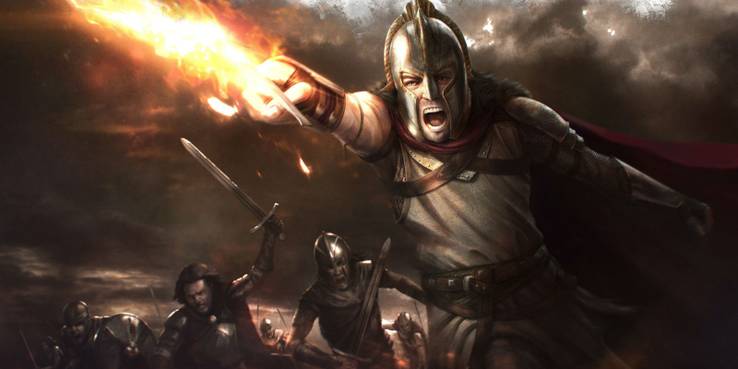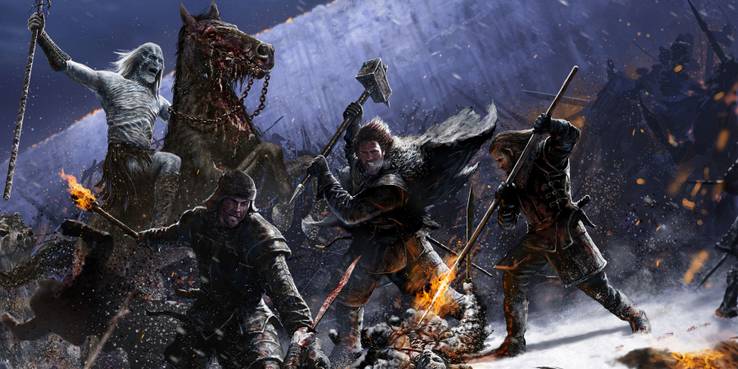Average home insurance cost, Home insurance agency, Home insurance American, Home insurance american family, Home insurance first American, Homeowners insurance, Homeowners insurance agents, Homeowners insurance companies, Homeowners insurance cost, Homeowners insurance cost average, Homeowners insurance cost estimator, Homeowners insurance Costco, Homeowners insurance coverage, Homeowners insurance declaration page, Homeowners insurance of America, Homeowners insurance quotes, Homeowners insurance companies in florida
Game of Thrones prequel The Long Night can answer some burning questions that have never been answered on the show or in A Song of Ice & Fire books. A spinoff to Game of Thrones has long been planned at HBO, and now it's beginning to move forward.
Producers and writers George R.R. Martin and Jane Goldman have confirmed the series will take place during the Age of Heroes, roughly 8000 years before the events of Game of Thrones and ASOIAF. The title that Martin announced - The Long Night - would seem to indicate that the plot will center around the first conflict with the White Walkers, commonly referred to as “the Long Night” in both the books and on the show.
Because this period in Westerosi history is largely shrouded in myth, there are a lot of questions surrounding elements from Game of Thrones that were in existence or sprang out the era of The Long Night. The Wall, the White Walkers, Winterfell, certain prophecies, etc. all grew out of that time, and as such, have very foggy backgrounds. A decent amount of about those elements has been divulged in Game of Thrones, but there are still huge gaps when it comes to their origins. While The Long Night, which began production in October, will no doubt want to explore parts of the larger ASOIAF world (or even add to it), there’s also a great deal of content it could further explain or flesh out.
What Is The Real Purpose of the White Walkers?
 During Game of Thrones season 6, Bran discovered that the Children of the Forest had created the White Walkers from humans in an attempt to raise an army that could defeat the First Men. But the question remains as to exactly how and why they rose up against their makers. Was it a Skynet situation and they fought back against masters that would’ve destroyed them once their purpose had been fulfilled? Or did the Children of the Forest just abandon them to their own devices and as their society developed, as did their desire to expand?
During Game of Thrones season 6, Bran discovered that the Children of the Forest had created the White Walkers from humans in an attempt to raise an army that could defeat the First Men. But the question remains as to exactly how and why they rose up against their makers. Was it a Skynet situation and they fought back against masters that would’ve destroyed them once their purpose had been fulfilled? Or did the Children of the Forest just abandon them to their own devices and as their society developed, as did their desire to expand?advertising
One thing can be said for certain – the White Walkers want to rid the world of anything warm blooded and alive and dominate in its place. Their goal seems to be the utter destruction of man, but why that’s their goal is a little unclear. It could be that The Long Night will shed more light on their hunger for conquest and their hatred for the world of the living.Who Built The Wall (And How)?
While we know a great deal about the Wall already thanks to Game of Thrones, that knowledge rests on some pretty big mysteries. According to canon, the Wall runs for three hundred miles and stands 700 feet tall. It was constructed to protect Westeros from enemies to the north, which in that time would’ve been the White Walkers. To that end, it was also protected with magical spells that forbade certain magic or magical creatures to pass beyond it, most likely cast or worked by the Children of the Forest. They united with their previous enemies, the First Men and beat back the White Walkers during the first Long Night, and according to mythology, assisted Bran the Builder in raising the Wall.
Despite those of specifics regarding the ancient barrier, there are still some pretty big questions The Long Night could answer. First, who actually built the Wall? Legend attributes it to Brandon the Builder, the supposed founder of House Stark who is also credited with constructing Winterfell. But unless Bran the Builder lived for several centuries, there’s no way he could’ve finished either project in a single lifetime, much less both. According to George R.R. Martin, the Wall took several hundred years to raise and additional millennia to reach the height it’s at in Game of Thrones.
Then there’s the issue of the magic used to protect the Wall on a supernatural level. According to Westerosi legend, this was where the Children of the Forest came in. After aiding their allies in the fight against the White Walkers, they lent their skills to the construction of the Wall, and inlaid it with spells that prevented "magic" from going over, under or through. We see this on the show when Benjen explains why he can’t accompany Bran to Winterfell and in the books when Coldhands faces the same problem issue.
But while those protection spells were effective at keeping out undead creatures, the rules don’t appear to apply to all people or things touched by magic. Jon Snow and Beric Dondarrion both pass back and forth through the Wall with no issues, despite both being magically undead. It’s worth wondering if there were other magical beings or factions that aided in the Wall’s construction if the Age of Heroes was indeed a magic-heavy era in Westerosi history. Considering the Essos religions that brought back Snow and Dondarrion has its own legends about the Long Night, it’s possible the Children of the Forest weren’t the only magical ally involved in the first battle against the White Walkers
Who Really Was Azor Ahai/The Last Hero?
Related: Game of Thrones Season 8: Every Reveal From The EW Cover Story
The other half of the legend is a prophecy that he will be reborn one day and once again be instrumental in beating back a long night. That prophecy is central to several plots in Game of Thrones and The Long Night. Melisandre believes Stannis is Azor Ahai reborn, which is why he changes his sigil to a heart with a flaming sword through it when he joins the religion of R’hllor and accepts her beliefs. Stannis didn’t turn out to be the right choice, but Jon and Dany are likely candidates.
In one of many parallels between eastern and western mythology from this era, there’s a similar legend in Westerosi mythology. The Long Night is said to have ended in part because a figure referred to as The Last Hero sought out the Children of the Forest at great peril and managed to gain their assistance in defeating the White Walkers. In the novels, Sam Tarly mentions that there are mentions of the Last Hero using a special sword made of dragonsteel to defeat White Walkers and that it was given to him by the Children of the Forest. And in both the books and the show, he’s also prophesied to return as the "Prince That Was Promised".
advertising
Like Bran the Builder and other figures from the Age of Heroes, we can’t take their descriptions literally, and that raises questions. Were there actually two men with coincidental things in common or is that a distorted echo of reality? It seems more likely that one large conflict happened and was interpreted in different ways by different cultures and/or regions. That would account for the similarities in the Azor Ahai/Last Hero stories and accompanying prophecies. Perhaps there was one instrumental person during the first Long Night who brought about victory, or maybe it was an instrumental group. It feels very possible we’ll get to the roots of both legends in The Long Night as well as why they’re so similar.advertising
Are The Two Long Nights The Same?
As is evident in the legend of Azor Ahai as well as other in-universe mythology from Essos, lands on the eastern continent experienced a “long night” of their own. Stories from the ancient Rhoynish mention their great river freezing, as well as demon creatures terrorizing in the longest winter and lack of sun they’d ever experienced, as do other cultures. There are even stories blaming the cause of the darkness on a king who practiced necromancy, a practice adjacent to how the Children of the Forest create the White Walkers and exactly the same as what the White Walkers do to create their armies.
The fact that the Long Night seems to have happened to places other than Westeros doesn’t really get acknowledged on the show, but it’s clear from clues that in A Song of Ice & Fire, both regions were affected, presumably at the same time. When one takes into account the fact that the continents were much closer 8000 years before the events of ASOIAF and Game of Thrones (physically connected in the case of the Rhoyne and Dorne), it’s easy to see how the White Walkers could’ve and would’ve invaded both regions.
There’s not so much a question to answer here as an opportunity to explore. Considering Game of Thrones spent the bulk of its time in and talking about Westeros from nearly every angle, it would be gratifying to get a deeper look at Essos in The Long Night. Lands like Asshai and Yi Ti that only exist in legend during the time of Game of Thrones could be physically realized and offer the prequel the chance to explore something wholly new. If the first conflict with the White Walkers really did affect the extensive area legend seems to indicate it did, The Long Night offers the possibility of visiting those places




